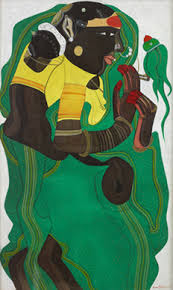The time was high noon, around 1.00 pm and I looked out for a
cafeteria. There was none. I made a quick exit to find some good Tibetan lunch
from a homely restaurant. Such places were available in Tibetan settlements, at
a distance of two to five km away from Namdroling
Monastry. You can walk it out too bypassing the auto-rickshaw guys but I
would advise the second option. The advantage is that you can strike a
conversation with the auto-driver and ask about the life in Tibetan villages.
The old camp is the place where poor refugees freshly
displaced from Tibet settled in the early sixties. One can make it out from the
impoverished surroundings but it looks much more spacious and dignified than an
average Indian slum. The surroundings are clean as well with no sign of garbage
or plastic waste anywhere in sight! As I was walking through the narrow street,
a Tibetan youth on a scooter stopped his bike and wished me. He asked about my
intention in a friendly way, that too in chaste English and drove off. He did
come back after a short while and invited me for a community lunch as a part of
Pooja celebration. I had to decline the offer as I wanted to experience of the
ambience of Tibetan restaurant-cum- home. The restaurant part make the facade
and home is at the back. There is a separate place for wash, detached from the
dining area. You can have as many cups of Tibetan Green Tea as appetisers, they
are free. Drinking water is not provided, you are supposed to buy mineral water
bottles. Normal tea/coffee is also elusive as Pepsi/Coke is the raison d'être of the monks who are the
main patrons. I had seen young bhikshus
moving around with Cocoa Cola bottles even in front of the prayer hall.
The popular item for lunch is Thukpa (Tibetan flat noodle soup) available either with beef or with
pork. Oddly enough, the Tibetan menu is exceedingly non-vegetarian and I am at
a loss to figure out how the fare passes the principles of Ahimsa. You can try Momo
too, the Tibetan dumpling made out of wheat flower and chicken minus the
masala, in steam. Momo is
irresistible when served hot with sauce and sliced onions. Momo is a main player in break-fast, lunch and dinner and usually a
plate of ten pieces is enough.
I asked for a vegetable roll for breakfast and what I got was
something akin to shawarma wrapped
around in a larger and thicker kuboos
(roti made out of wheat flour). What’s more, it had a single-omelette too
camouflaged among the vegetable gratings. One must try the Butter-tea,
it is unique. A very special Tibetan decoction, heavier with butter and plenty
of milk. Interestingly, salt is added instead of sugar. Butter-tea is not
easily available. If you are near the main entrance of Namdroling, try the Tibetan
Kitchen. The unassuming cook, teen-aged Patric from Bengal makes it taking
his time and keeps you engaged with his interesting anecdotes.
I visited the new camp on the second day, situated at four km
further down the road. The two sides of the road are lined with bungalows where
the rich among the refugees live.
I was astounded to see the disparities in status. There are vast stretches of
land behind these mansions without any sort of cultivation. I wondered how
Rubber trees failed to make an inroad into the Tibetan land. (In Kerala, even
the adivasis are more inclined to
grow rubber, which is detrimental to the environment but brings money).
Why these people are shying away from
agriculture? I asked
the auto-rickshaw driver. In fact, he doesn’t like the Tibetan crowd. They have plenty of money coming from abroad
and lead a lazy life, he said.
The new settlement is a happening place with well-planned
cityscape. Modern Administration buildings, apartment complex, hospital,
conference halls, auditoriums, temples, community centres, two Universities (Sera May and Sera Jay) and lined with trees
everywhere. The Dalai Lama when he makes a visit stays in one of the three
guest-houses away from the residential area.
I buzzed into a cafeteria near the University frequented by
young scholars. A glass of green tea was immediately served to me without
asking. The monks were busy eating
fast-food and gulping down soft-drinks. Normally they spend twenty five years
for graduation and five more years for specialisation. Afterwards they can go
abroad and teach Buddhism, if so inclined.
I was the only outsider and nobody took notice. After some time, a Buddhist monk in his late
twenties sat opposite to me with a book in hand. I asked his name and he
uttered an unpronounceable syllable. It was a good start, however.
Can you describe the essential
teachings, Sir?
My English is rather poor, he said.
Moreover, it takes quite some time to give you even an elementary idea of
Buddhist philosophy.
He bid good-bye to me with a dispassionate smile. Perhaps he
took me for an inquisitive journalist veering
into the private lives of monks.
The glassful of green tea was still waiting. I felt
crest-fallen for no obvious reason. Now, who is going to answer my long-pending
question?
Does the eight-fold noble path take
you to Enlightenment directly? Or is it just a purifier?
Relax! I said to myself, asking questions is more important
than finding their answers.
Yes, it was a splendid consolation.
**************




